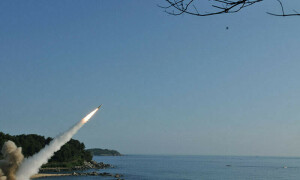
The year 1967 was drawing to a close. The period marked the beginning of the unprecedented agitation against Ayub Khan.
Bengali leaders were keeping an eye on Z A Bhutto and other opposition leaders in the western wing. Ayub still considered himself popular, banking on intelligence reports, which misinformed him.
After the opposition adopted Shaikh Mujib’s six-point charter at Lahore, Ayub began treading a stricter path. He put Mujib in jail who continued to issue harsh statements against his authoritarian rule. As he languished in jail the ‘loyal’ bureaucracy hatched another plan to justify Mujib’s detention for an unspecified period. This was the ‘Agartala conspiracy’, which purported that Mujib with his aides had gone to Agartala (Tripura, India) and had decided to launch a rebellion with the help of India to secede East Pakistan.
The ‘conspiracy’ was not made public till Ayub arrived in Dhaka at the end of December, 1967, in an attempt to find an amicable solution with politicians. There the intelligence men told him that a conspiracy was ready to blow up his plane.
Permission was granted to lay hands on those ‘involved’.
On January 6, 1968, a large number of people were arrested. No civil agency was informed and all action was taken by the army. Eight persons including three CSS officers — Rahil Qudus, Fazal Rehman and Shamsur Rehman — were arrested, followed by the arrest of Commander Mozammil Hussain. A press note was issued in the evening confirming the arrests.
Twelve days later a separate declaration was issued in which the home department implicated Shaikh Mujibur Rahman in the conspiracy. He had been already detained along with others. They were released and arrested again under martial law regulations and were taken to Dhaka Cantonment under military custody. The whole affair was supervised by no less than the then Commander-in-chief, General Yahya Khan.
In all, 35 persons were implicated including some political activists. It was first planned that all the ‘accused’ would be tried under martial law regulations but on the advice of some bureaucrats in West Pakistan Ayub changed his mind and decided to proceed under civil law by a civil tribunal. Headed by Chief Justice S A Rahman, it had Justice M A Khalid and Justice Maqsoodul Hakim as members.
After returning from Dhaka, Ayub appeared tired but he did not show any sign of languor. When he reached Chaklala airport on January 26, to receive Shah Hussain of Jordan, he had fever. Next day his blood pressure shot up and for the next 18 days doctors confined him to bed rest. Only his personal physician Dr Col Mohiudin had access to the president.
During his illness, the C-n-C Gen Yahya stayed in the room adjacent to Ayub where other army officers were also present and according to Altaf Gohar, Yahya attended to all Ayub’s papers, which he claimed to be doing on the insistence of an ailing Ayub. When he did not deliver his monthly address on radio and television on Feb 1, rumours gripped the country that perhaps Ayub was not free.
On February 10, doctors said that Ayub had recovered from a heart ailment and six days later he began attending to official business. The March 1 address on radio dispelled all doubts about his health. On Pakistan Day Ayub appeared at a public meeting in Lahore to show improvement in his health.
By mid-year Ayub got his medical check up from London and as soon as he landed in Pakistan he began to think of the ‘Decade of Reforms’ celebrations that his flatterers had planned to hold from October 1 to 27, 1968. The opposition chose the same days for launching protest rallies which Ayub thought were acts of a ‘handful of miscreants’ and decided to crush them. It did not work.
Besides arresting student activists and political workers, Ayub also jailed Z A Bhutto, Mumtaz Bhutto, Dr Mubashir Hassan, Ghulam Mustafa Khar, Ahmad Raza Kasuri and many more under Defence of Pakistan Rules, enacted during the 1965 Indo-Pakistan war. Ayub felt the heat of the rising opposition and tried to pacify things which had gone too far. He became so overburdened by these activities that he put off his annual visit to Sindh for partridge shooting and rest. People across the country had become too vocal and expressed their anguish against the government.
As protesters filled the streets Ayub stuck to his guns, not paying any heed to popular demands, nor was his intelligence apparatus prepared to guide him. Courts acted judiciously and as petitions were filed they were disposed of, sending the message that courts could not be a part of Ayub Khan’s ill-advised campaign to hold on to power through coercion. The beginning of his end had begun.
Shaikhaziz38@gmail.com










































Dear visitor, the comments section is undergoing an overhaul and will return soon.